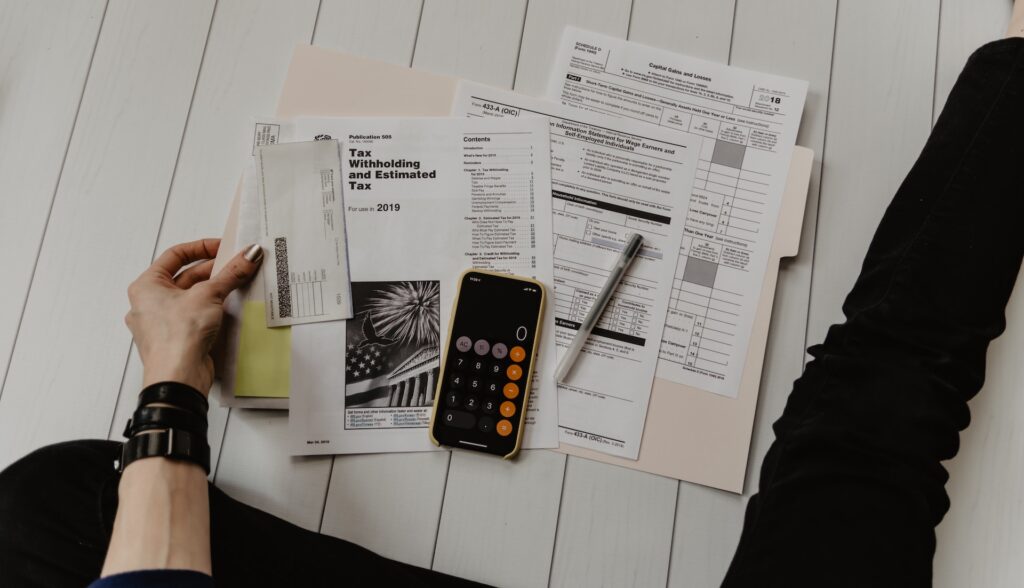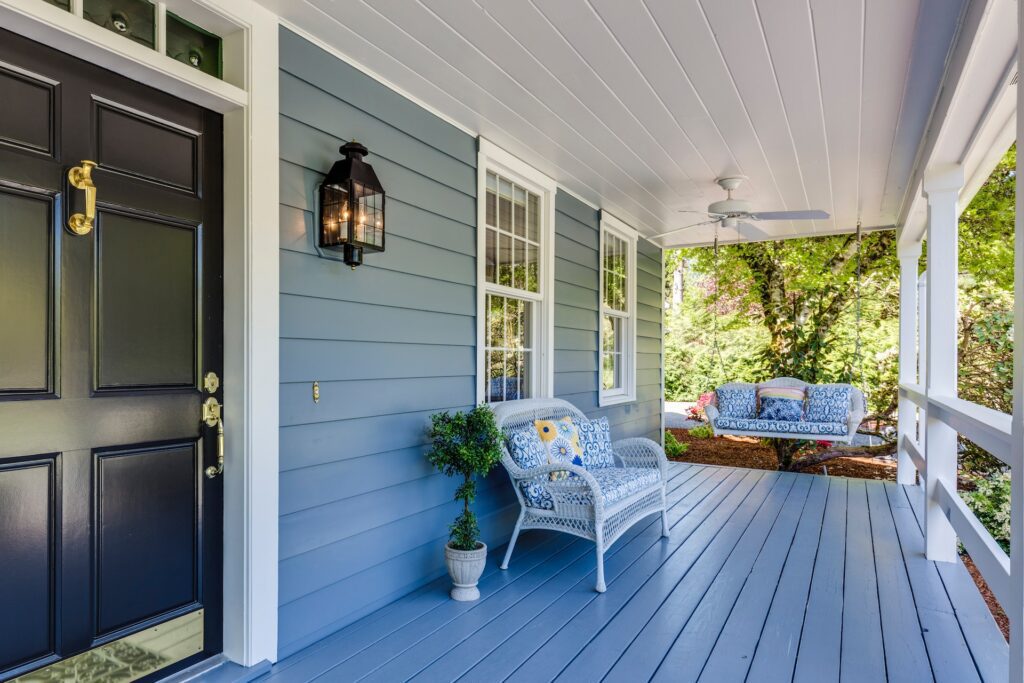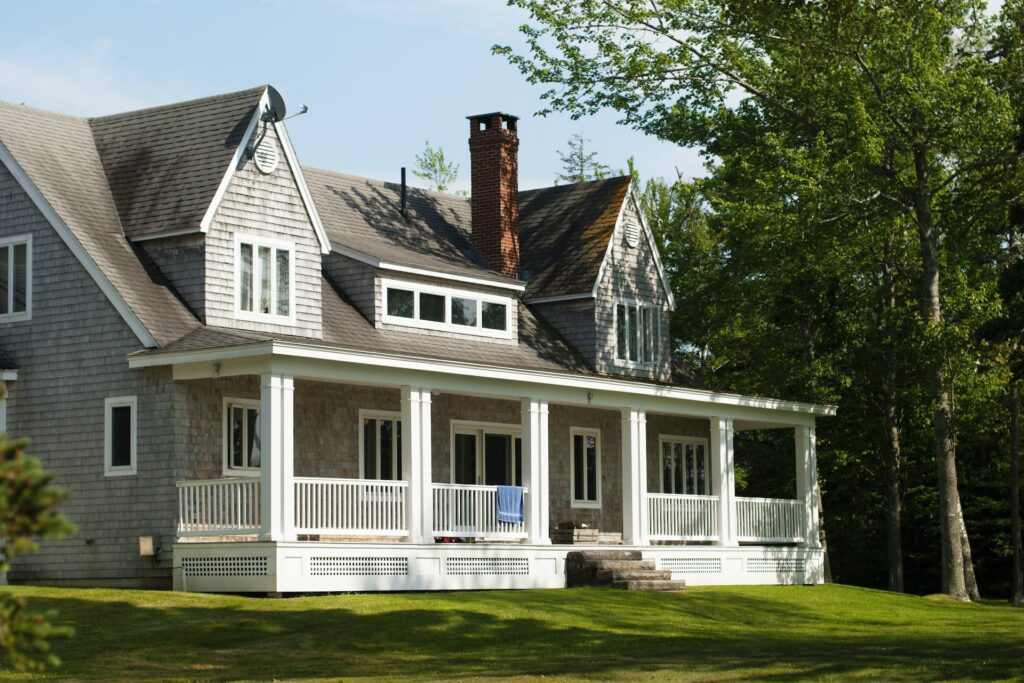
Navigating the intricacies of real estate transactions often raises questions, and one common query is whether a 1031 exchange can be utilized for a primary residence. Many homeowners are familiar with the primary residence exclusion, allowing them to enjoy tax-free profits of up to $250,000 (or $500,000 for married couples) after just two years of occupancy. However, a less-explored avenue exists—converting an investment property into your primary residence and leveraging the benefits of this tax break.
In this article, we delve into the nuances of the primary residence exclusion, debunking misconceptions and shedding light on the potential of converting an investment property. Whether or not a 1031 exchange was involved in the initial acquisition, there are strategic approaches to capitalize on tax advantages. Join us as we explore the rules, requirements, and benefits associated with converting an investment property into your primary residence, providing you with a comprehensive understanding of this underutilized option in real estate taxation.

Understanding the Primary Residence Exclusion
The primary residence exclusion stands as a beacon for homeowners seeking tax benefits, offering a pathway to reap tax-free profits from the sale of their dwelling. Let’s unravel the essential aspects of this exclusion:
The primary residence exclusion, established by the Internal Revenue Code (IRC) Section 121, allows individuals and married couples to exclude a significant portion of their home sale profits from capital gains taxes. For those meeting eligibility criteria, the exclusion grants up to $250,000 in tax-free gains for individual filers and up to $500,000 for married couples filing jointly.
To qualify for the primary residence exclusion, homeowners must fulfill specific criteria. The property must have been owned and used as the taxpayer’s principal residence for at least two of the five years immediately preceding the sale. This period of ownership and occupancy triggers the eligibility for the exclusion.
Upon meeting the eligibility criteria, homeowners can enjoy tax-free profits from the sale of their primary residence. The occupancy duration requirement is relatively short, with just two years of inhabiting the property out of the last five years sufficing for the exclusion. This allows individuals and couples to unlock substantial tax benefits without an extended commitment to residency.
As we delve deeper into the topic, we’ll explore how this exclusion intersects with the realm of 1031 exchanges and investigate the possibility of converting investment properties into primary residences while retaining the advantages of both approaches. Join us in exploring tax-savvy real estate strategies that can significantly impact your financial outlook.
Converting Investment Property to Primary Residence
Now, let’s explore the intriguing prospect of transforming an investment property into your primary residence, unlocking a realm of tax advantages that might go unnoticed. The process involves whether your property was acquired through a 1031 exchange or without.
Converting an investment property into your primary residence presents a unique avenue for homeowners to capitalize on tax breaks. This strategy allows individuals to transition a property initially held for investment or business purposes into a personal dwelling, leveraging the benefits associated with the primary residence exclusion.
For properties acquired without using a 1031 exchange, the conversion process is relatively straightforward. Homeowners can change the property’s use at any time by utilizing it as their primary residence for two of the preceding five years before its sale. This flexibility offers an appealing option for those looking to alter the purpose of their real estate investments.
If the investment property was acquired through a 1031 exchange, specific rules govern the conversion process. The key considerations include the initial intent to hold the property for investment purposes and how this intent is demonstrated. While the 1031 exchange must be used to acquire property intended for investment, there are strategic approaches to converting it into a primary residence later.
Despite limitations on using a 1031 exchange to purchase a property directly for personal use, homeowners can convert a property obtained through a 1031 exchange into their primary residence after a period of holding it for investment or business purposes. The crucial factors include the initial intent and how it is proven, allowing homeowners to make strategic decisions regarding their property use.
As we delve deeper into the intricacies of conversion post-1031 exchange, we will explore specific rules, safe harbor provisions, and the timeframe for making this transition. Join us on this enlightening journey into the world of real estate tax strategies that can reshape your financial landscape.

Converting Without a 1031 Exchange
For property owners who did not engage in a 1031 exchange, converting an investment property into a primary residence is flexible. Here, we outline the steps and considerations involved in making this transition:
Steps to Change Use:
- Two-Year Occupancy Requirement: To convert an investment property into your primary residence, it must be used as your principal dwelling for at least two of the five years immediately preceding its sale. This occupancy requirement forms the foundation for eligibility.
- Prorated Exclusion: The primary residence exclusion allows for tax-free gains up to $250,000 (individual) or $500,000 (married couples). In cases where the property was not acquired through a 1031 exchange, the exclusion is prorated based on the duration of qualified use as a primary residence compared to non-qualified use as an investment.
- Demonstration of Qualification: It is essential to demonstrate that the property was genuinely used as the primary residence during the required period. Factors such as voting address, tax return mailing address, and other indicators of primary residence status become crucial in proving the conversion.
When converting an investment property acquired without a 1031 exchange, the prorated exclusion considers the proportion of time the property served as a primary residence versus an investment. The calculation involves determining the ratio of qualified use (as a primary residence) to non-qualified use (as an investment). This proration allows homeowners to enjoy a portion of the primary residence exclusion based on their property’s history of use.
Homeowners should be aware that upon conversion, they may be required to recapture any depreciation claimed during the property’s investment phase. This recapture is essential in the overall financial assessment of converting an investment property into a primary residence.
In the subsequent sections, we’ll delve into scenarios where a 1031 exchange was employed, exploring specific rules and strategies for conversion. Join us as we uncover the nuanced details of real estate tax planning, providing you with insights to navigate this transformative journey.
Converting After a 1031 Exchange
For individuals engaged in a 1031 exchange, converting an investment property into a primary residence involves navigating specific rules and considerations. Here, we delve into the intricacies of this process:
A fundamental rule of a 1031 exchange is that it cannot be used to purchase a property intended for use as a primary residence directly. The primary purpose of a 1031 exchange is to facilitate the acquisition of property for investment or business purposes. Therefore, participants must clearly intend to hold the property for such purposes.
If a property obtained through a 1031 exchange is later converted into a primary residence, the IRS scrutinizes the initial intent and actions taken after the purchase. For instance, if a property acquired through a 1031 exchange is immediately moved into and used as a primary residence, it raises questions about the taxpayer’s actual intent at the time of the exchange.
To provide clarity and a safe harbor for taxpayers, the IRS has established rules for situations where a property acquired through a 1031 exchange is used as a rental before conversion. If the property is rented for the next 24 months, with personal use not exceeding two weeks or 10% of the total rental days, the IRS acknowledges the taxpayer’s continued investment intent. This period of rental use acts as a safeguard against challenges to the initial intent.
Between day one and two years after a 1031 exchange, property owners can assess whether they have fulfilled the investment intent and consider transitioning the property into their primary residence. Individual circumstances play a role in determining the optimal timeframe, with some feeling secure in their investment use after a year.
Upon conversion into a primary residence, homeowners can qualify for the primary residence exclusion, allowing tax-free gains up to $250,000 (individual) or $500,000 (married couples). To qualify, the property must have been owned for at least five years, with at least two of the last five years dedicated to residency.
The primary residence exclusion is prorated based on the duration of “qualified use” (as a primary residence) and “non-qualified use” (as an investment). Additionally, homeowners must be prepared to recapture any depreciation claimed during the property’s investment phase.
In the subsequent sections, we will further explore the benefits of converting an investment property into a primary residence, considering the overarching impact on capital gains tax and financial planning. Join us as we navigate the nuanced terrain of real estate tax strategies, offering insights to make informed decisions.

Qualifying for Primary Residence Exclusion After Conversion
Upon successfully converting an investment property into your primary residence, the prospect of enjoying the primary residence exclusion becomes a key consideration. Here’s a comprehensive guide to understanding the qualifications associated with this exclusion:
To qualify for the primary residence exclusion post-conversion, homeowners must have owned the property for at least five years. This ownership duration is a crucial benchmark, ensuring a commitment to the property over an extended period.
In addition to the overall ownership duration, homeowners must have resided in the converted property for at least two of the last five years preceding the sale. This residency requirement emphasizes the primary residence nature of the property during the specified timeframe.
Upon meeting the ownership and residency criteria, homeowners can leverage the primary residence exclusion to exclude a portion of the gains from the property’s sale from capital gains taxes. The exclusion is prorated based on the ratio of “qualified use” (as a primary residence) to “non-qualified use” (as an investment). This proration ensures a fair distribution of tax benefits based on the property’s historical use.
One important consideration when converting an investment property is the recapture of depreciation. Homeowners must be prepared to recapture any depreciation claimed during the property’s investment phase. This recapture is an essential element in the overall financial assessment of the conversion.
Ensuring eligibility for the primary residence exclusion involves thorough documentation of the property’s use, ownership duration, and residency periods. Homeowners are encouraged to maintain detailed records and seek professional guidance from tax advisors or real estate experts to navigate the complexities of the exclusion process.
By adhering to the ownership, residency, and proration requirements, homeowners can unlock the benefits of the primary residence exclusion, mitigating capital gains taxes and maximizing the financial advantages of their strategic conversion. As we move forward, we’ll delve into the broader implications of converting an investment property into a primary residence, exploring how this underutilized option can reshape your real estate portfolio and financial outlook.
Benefits of Converting an Investment Property
Converting an investment property into your primary residence offers many financial and strategic advantages. Delving into this transformative option can reshape your real estate portfolio and significantly impact your financial outlook. Here are the key benefits associated with this underutilized strategy:
1. Capital Gains Tax Reduction Over Time:
- Converting an investment property into a primary residence can reduce capital gains taxes over time.
- The primary residence exclusion allows homeowners to exclude up to $250,000 (individual) or $500,000 (married couples) of gains from the property’s sale, effectively reducing the tax burden associated with the appreciation in value.
2. Opportunity for Tax-Free Proceeds:
- Leveraging the primary residence exclusion post-conversion allows one to receive a portion of the home sale proceeds tax-free.
- The exclusion is prorated based on the duration of “qualified use” (as a primary residence), allowing homeowners to maximize tax benefits while transitioning the property’s purpose.
3. Strategic Use of 1031 Exchange Specifics:
- For properties initially acquired through a 1031 exchange, converting to a primary residence presents a strategic use of the exchange’s specifics.
- Safe harbor rules and a defined timeframe allow homeowners to transition the property’s use after a period of investment, aligning with their evolving needs and objectives.
4. Financial Flexibility with Debt Payoff:
- Converting an investment property can offer financial flexibility, especially in debt payoff scenarios.
- Homeowners may allocate debt payoff to the principal residence, eliminating the need for new debt or additional cash injection to acquire replacement property in a 1031 exchange.
5. Section 121 Exclusion Opportunities:
- Engaging in a 1031 exchange, holding the property for five years, and subsequently living in it for two of those five years opens up opportunities for Section 121 exclusion.
- This dual benefit allows taxpayers to benefit from the 1031 exchange deferral and the Section 121 exclusion, providing tax-free gains and additional financial advantages.
6. Strategic Real Estate Portfolio Planning:
- Converting an investment property into a primary residence becomes a strategic element in long-term real estate portfolio planning.
- Homeowners can align their real estate holdings with changing lifestyle needs, optimizing tax benefits and financial outcomes.
In conclusion, the benefits of converting an investment property into a primary residence extend beyond immediate tax advantages. This strategic approach offers financial flexibility, tax-free proceeds, and the opportunity to align real estate holdings with evolving life circumstances. As we explore further, we’ll delve into real-life scenarios, providing insights into how homeowners can implement and maximize the advantages of this dynamic real estate strategy.
Conclusion
Navigating the landscape of real estate transactions involves strategic decision-making, and converting an investment property into a primary residence is a powerful yet underexplored avenue. In this exploration, we’ve uncovered the intricacies of this transformative strategy, shedding light on the rules, benefits, and financial implications.
Converting an investment property provides potential tax advantages and aligns your real estate portfolio with changing lifestyle needs. The interplay between the primary residence exclusion, 1031 exchange specifics, and prudent planning creates a unique opportunity for homeowners to shape their financial landscape.
Considering the benefits of tax-free proceeds, reduced capital gains taxes, and the strategic use of 1031 exchange rules, it becomes evident that this approach goes beyond immediate gains. It offers a pathway to financial flexibility, allowing you to navigate debt payoff strategically and optimize your real estate holdings for the long term.
In the realm of real estate, where financial landscapes can shift, this underutilized option offers a dynamic and forward-thinking approach to portfolio management. However, the complexity of tax regulations necessitates professional guidance. Consultation with tax advisors, real estate experts, and legal counsel can ensure that your decisions align with your financial goals while adhering to regulatory requirements.
As you embark on this journey of real estate transformation, armed with a deeper understanding of the conversion process, may your decisions be informed, strategic, and tailored to maximize the benefits for your unique circumstances. The potential to unlock financial advantages awaits those who navigate this terrain with foresight and expertise.